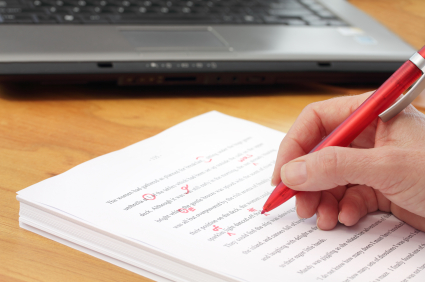At ATTMP, the process listed below is quite similar, some books requiring more of certain stages than others. No two edits are alike, but the process is somewhat the same.
The Editorial Process
by Steve Laubehttp://stevelaube.com/the-editorial-process/

It is important to understand the process through which a book takes under the umbrella called “The Edit.” I meet many first timers who think it is just a one-time pass over their words and that is all that will ever happen. And many who self-publish think that hiring a high school English teacher to check for grammar is enough of an edit.
There are four major stages to the Editorial Process. Unfortunately they are called by various names depending on which publisher you are working with, which can create confusion. I will try to list the various terms but keep them under the four categories.
Rewrites / Revisions/Substantive Edit
These can happen multiple times. You could get input from your agent or an editor who suggests you rewrite or revise those sample chapters of the full manuscript. Last year I suggested that one of my non-fiction clients cut the book in half and change its focus. We sold this first time author. But the writer had to do a lot of work to get it ready for the proposal stage.
There are some publishers that will do this stage after a book has already been contracted because they saw the potential in the proposal. And note that this stage isn’t always necessary. It all depends on the quality of that final draft you turned in to your publisher. Few get it perfect the first time.
Line Edit / Substantive Edit/Content Edit
Already you can see a descriptive term repeated. This stage is where the editor, usually a senior editor, or an editor is hired by the publisher to look at the book closely. This stage can morph into a rewrite (see above) if there are substantive changes. In some ways it is like a mechanic pulling apart an engine and inspecting the parts, and then putting it all back together again.
Sometimes this stage is very light sometimes it can feel heavy handed. Neither is wrong. Trust the editor to have the desire to make your book better.
Remember that this stage can be a form of negotiation. Ultimately it is your name on the finished book. An editor should not dictate but should facilitate. It is ultimately a partnership. And if you find that perfect partner…do what you can to work with them over and over. But also do not blind yourself into thinking that you are always right.
Copyedit
This can be done in-house or with a freelancer. One friend of mine calls this stage “The Grammar Police.” The copyeditor’s job is to check grammar, punctuation, spelling, and consistency. If your book has unusual spellings (like characters with Czechoslovakian names) consider creating a separate document called a style sheet which should be submitted with your manuscript so the copyeditor will know you meant to spell a word that way. Consistency is the key.
This edit takes a special skill. The editor is technically not reading for content. They are looking at each word for accuracy in communication.
It can be a stage fraught with humor. Like the time a copy editor changed the phrase “woulda, coulda, shoulda” to “would have, could have, should have” because the first was grammatically incorrect.
Unfortunately this stage can also be fraught with danger if the copyeditor suddenly takes the role of substantive editor, after that stage has already passed. I’ve heard stories of character names being changed, entire scenes rewritten, etc. If you have trouble at this stage, appeal to your senior (or acquisitions) editor and see if the changes had been approved before being sent to you.
Again, remember that this can be a place for negotiation. But if you are breaking the rules of grammar or spelling be prepared to defend yourself. But please, “Never Burn a Bridge.”
Proofreading
If the line editor is looking at the paragraph for content, and the copy editor is looking at every word for accuracy, the proofreader is looking at every letter and punctuation mark for perfection.
Again, this takes a special skill. I once sat on a plane next to an amazing freelance proofreader. I proudly showed her an article I was writing. She found ten mistakes per page. Every one of them was my fault for being sloppy. I ate humble pie with my bag of peanuts.
This proofreader is the last protection you have before the book is tossed into the market.
Error Free Publishing!
With all these eyes on your book you are guaranteed to have a product with no typos or errors of any kind….oops…that isn’t true.
Despite every effort and a lot of smart people working on your book, an error is bound to slip through. I remember one book where we had the author, three of his students, myself, a copy editor, and two proofreaders go through a book. Eight people. The book was published and the author’s critics found a dozen errors within the first week. Sigh.
Do your publishers a favor. If you find an error? Make a note of it (page number, line number, and error) and write a quick note to the editorial department of that publisher respectfully pointing it out. A file is usually kept of every book and when it is time to reprint the book they can go in and correct the error. And in the ebook world the digital file can be corrected fairly easy.
No comments:
Post a Comment